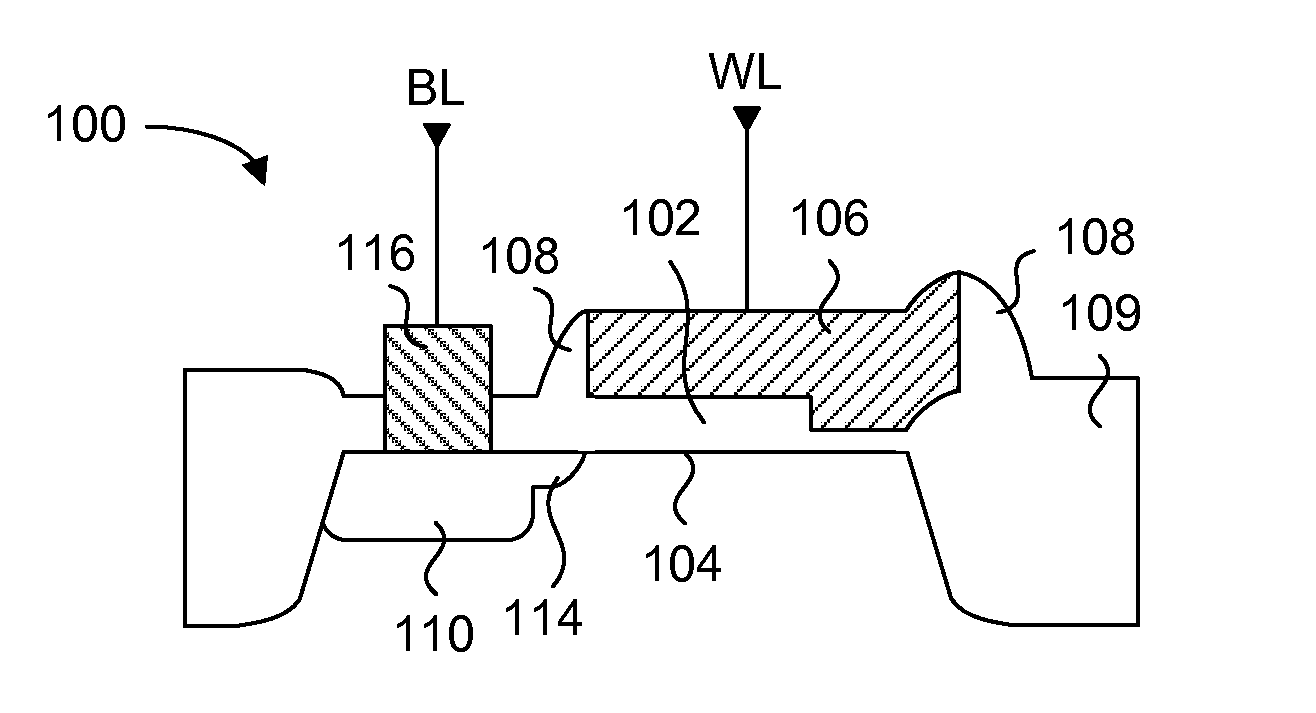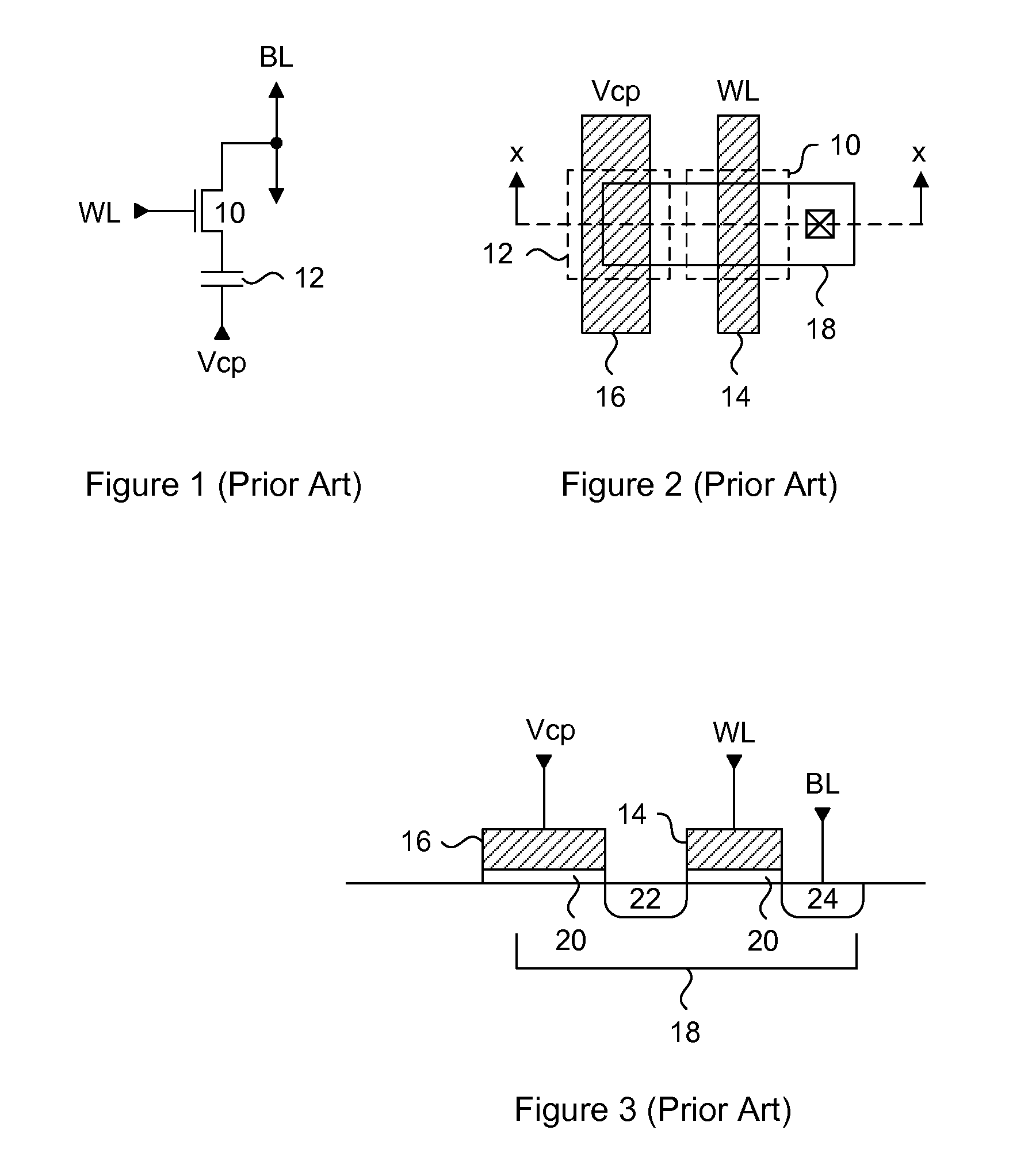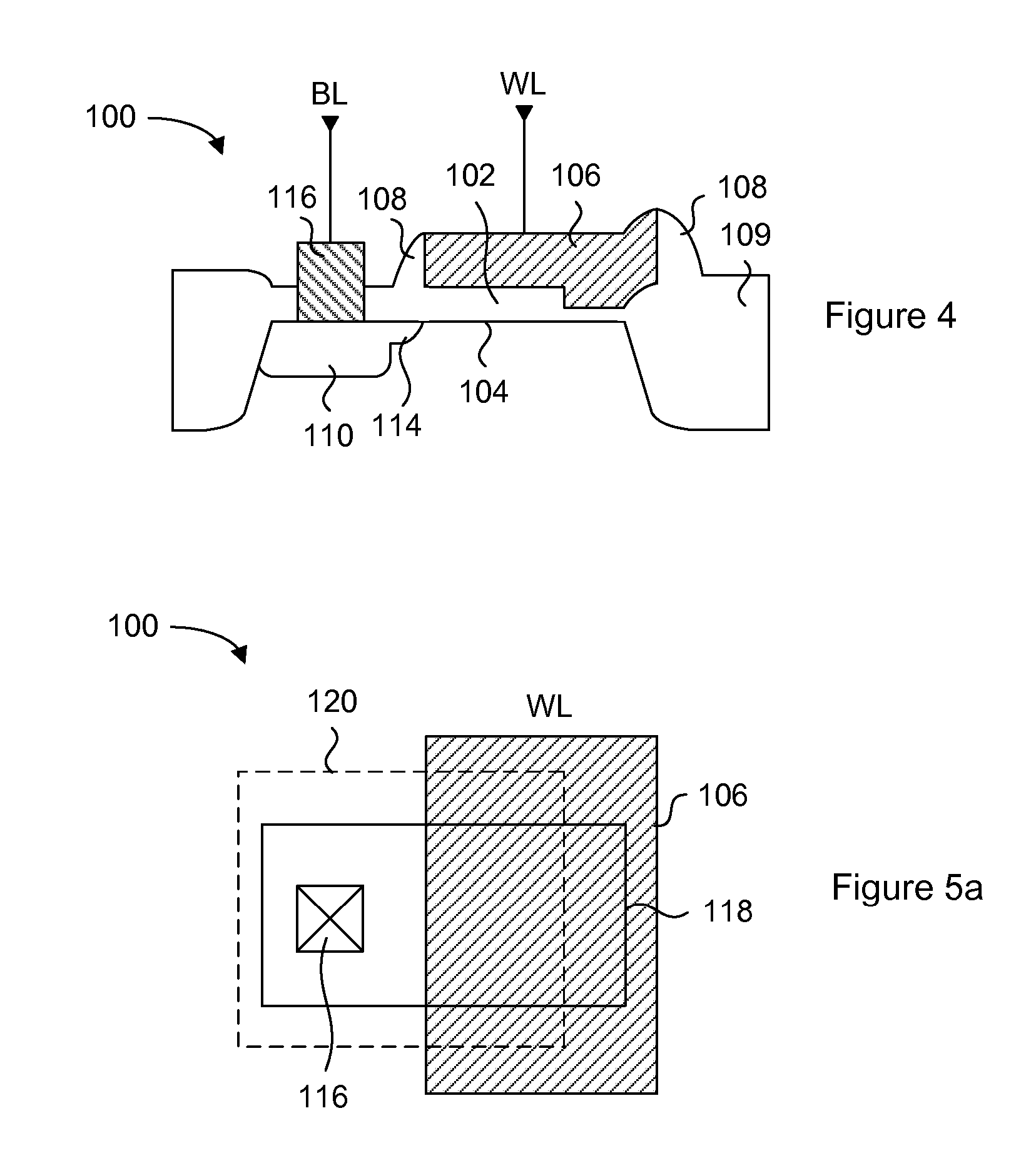Anti-fuse memory cell
a memory cell and anti-fuse technology, applied in the field of non-volatile memory, can solve the problems of many limits on the array size, few kilo ohms leakage between the source and the drain, and the possibility of anti-fuse self-healing under current stress, etc., to achieve simple and reliable, high density, and high reliability.
- Summary
- Abstract
- Description
- Claims
- Application Information
AI Technical Summary
Benefits of technology
Problems solved by technology
Method used
Image
Examples
Embodiment Construction
[0060] Generally, the present invention provides a variable thickness gate oxide anti-fuse transistor device that can be employed in a non-volatile, one-time-programmable (OTP) memory array application. The anti-fuse transistor can be fabricated with standard CMOS technology, and is configured as a standard transistor element having a source diffusion, gate oxide and a polysilicon gate. The variable gate oxide underneath the polysilicon gate consists of a thick gate oxide region and a thin gate oxide region, where the thin gate oxide region acts as a localized breakdown voltage zone. A conductive channel between the polysilicon gate and the channel region can be formed in the localized breakdown voltage zone during a programming operation. In a memory array application, a wordline read current applied to the polysilicon gate can be sensed through a bitline connected to the source diffusion, via the channel of the anti-fuse transistor. More specifically, the present invention provide...
PUM
 Login to View More
Login to View More Abstract
Description
Claims
Application Information
 Login to View More
Login to View More - R&D
- Intellectual Property
- Life Sciences
- Materials
- Tech Scout
- Unparalleled Data Quality
- Higher Quality Content
- 60% Fewer Hallucinations
Browse by: Latest US Patents, China's latest patents, Technical Efficacy Thesaurus, Application Domain, Technology Topic, Popular Technical Reports.
© 2025 PatSnap. All rights reserved.Legal|Privacy policy|Modern Slavery Act Transparency Statement|Sitemap|About US| Contact US: help@patsnap.com



